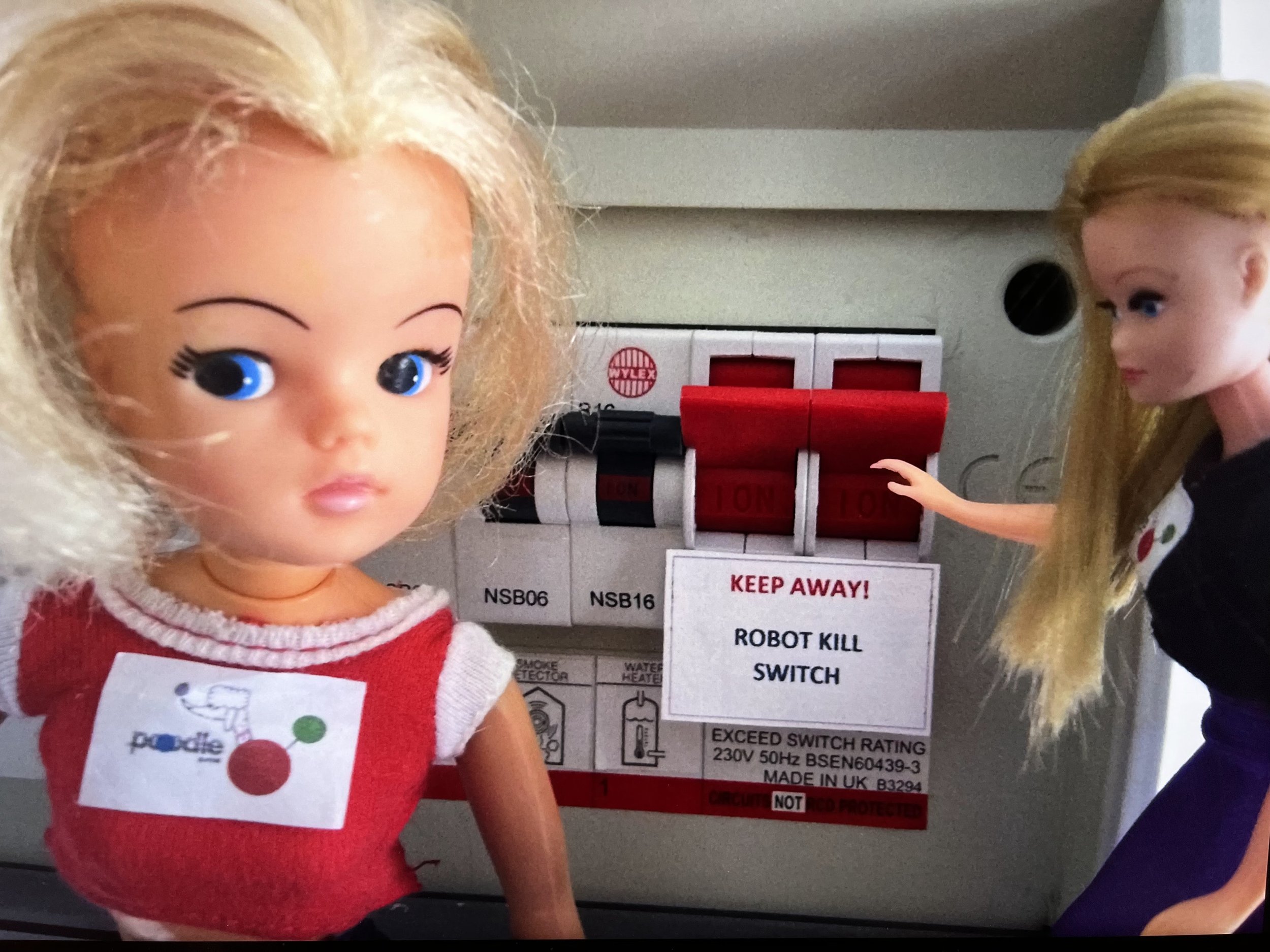Six Keys to Change.
Graphic by interdisciplinary contemporary artist Martha Haversham
Change sucks.
It requires one to step into the unknown.
To twist and turn into a new transformed self, team or firm. To leave the safety of the known path. Lift anchor and sail into a foggy horizon with no guarantee of safe harbor.
Difficult as it is…
Irrelevance is worse.
Individuals, teams and companies that wish to transform must endure change.
Successful change requires six steps:
Strategy.
Acquisition of new skills/M&A.
New organizational design.
Buy-in.
Aligned incentives
Education and training.
Graphic by interdisciplinary contemporary artist Martha Haversham
1. Strategy.
Strategy is “future competitive advantage”.
Specifically, what will people (customers, consumers etc.) want and need in the future?
People’s expectations constantly change and grow and optimizing for today’s needs assumes a steady state when demographic, technological and other changes are re-wiring needs.
What will a competitive set look like in the future?
The biggest opportunities and threats to any company often comes from outside it’s category. The greatest wealth creation and change drivers to the auto industry did not come from VW, GM, Toyota, BMW, Ford, Honda or Mercedes but from outside specifically Tesla which focused on software and electric and Uber who focused on replacing the car.
What advantage will you provide against those future needs and future competitive sets?
Gillette and Schick which thrived by charging increasingly higher prices for constantly improving quality razors sold through retail and advertised on tv and magazines had no advantage versus a Dollar-Shave-Club who sold good quality, low-priced razors through the mail using You-Tube and social media for awareness and sampling.
In addition, many young men were no longer fixated on being clean shaven a trend that the company refused to believe for a while.
Gillette was forced to take an 8 billion dollar write down.
Not moving to tomorrow when you should in order to protect today is always very costly.
Graphic by interdisciplinary contemporary artist Martha Haversham
2. Acquisition of new skills/ M&A.
To meet new needs of people and fend off a different competitive set, companies need to acquire people, channels or technologies from outside.
Too many companies waste huge amounts of money and time trying to cover their nakedness of next generation skills by hauling out some in-house assemblage on which they slap some weird name and then roll out accompanied by a bombastic press release.
Buyers are increasingly sophisticated and servicing existing customers with people who are still learning with their training wheels showing does not engender confidence or signal commitment.
Do it right. Get top notch people and buy firms that bring credibility and skills even if it involves re-allocating capital and resources from today. Funding yesterday at the cost of tomorrow is like starving one’s children so one can fund flowers for an ancestor’s grave.
3. New organizational design.
The future does not fit in the containers of the past.
Most organizations are designed for yesterday or today and not tomorrow.
If strategy changes and new people and companies are hired the biggest mistake that many make is tucking in tomorrow under today or yesterday.
Which defeats the purpose of the acquisition and dilutes all the strategic thinking.
New strategy requires new approaches on how a company is organized.
Principles that drive re-organization should be focused on maximizing customer benefit, ensuring friction-free collaboration that minimize duplication and aligning decision making with the right incentives.
Graphic by interdisciplinary contemporary artist Martha Haversham
4. Buy-in.
Too many firms after the first three steps of strategy, M&A and Re-organization believe their work is done and bring out the balloons and the posters and press releases.
Michael Tyson said, “Everyone has a plan till they get punched in the face”.
Boards and leadership of firms come quickly to the realization that everything is easy until people get in the way.
Telling people that change is good, threatening them with job loss if they do not change or creating communication materials and slogans to goad them into a cult like devotion to the new dear leader or the way forward rarely works in the short run and will likely fail after the threat of flagellation fades.
Because if there is nothing in it for them, people will out-wit, out-wait, out-pretend, and out-maneuver “management”. Until then they will fill the time genuflecting and bowing and going through the monitored motions of attending the right meetings, muttering the motivational mantras and stating the slogans required.
If one wants an organization or team to grow and change, we will need to deliver answers to three questions:
Why are the recommended changes good for them?
How can it help them grow?
How do these changes impact their compensation?
Graphic by interdisciplinary contemporary artist Martha Haversham
5. Aligned Incentives.
Steven Levitt of the University of Chicago in his book “Freakonomics” stated that if you want to know if a company’s strategy will work ask to see their incentive programs.
Over a decade ago magazine and newspaper publishers saw the emerging threat from digital technology and wrote grand strategy documents but few made it to the other side. Not because they were not smart but because they continued to incentivize the selling of pages and the old ways of doing the business. Power, promotions and pounds/dollars were paid to those who controlled today’s client relationships and today’s budgets.
If the fish rots from the top, then change only happens when seismic shifts in compensation and power happen at the top.
Everyone watches this because people will do what they are rewarded to do and not what some change agent or “Vision 20XX” encourages them to do.
It is hard enough to change and totally stupid to go through the pain of change when one gets rewarded to stay the same!
Graphic by interdisciplinary contemporary artist Martha Haversham
6. Education and training.
T.S. Eliot wrote “between the idea and the reality falls the shadow”.
In companies this shadow between where they are and where they want to be is known as lack of skills or know-how.
If you want people to behave differently, think differently, work differently in addition to communicating why it is good for them and incentivizing them to do so, companies must also provide ways for them to learn and grow the new skills and capabilities that will be needed.
Whether it be rotating into new groups, secondments or other strategies they must all be accompanied by some combination of self-serve, guided and enabled training.
The single biggest ROI in most companies in time will be the ability to upgrade the mental and emotional operating skills of their talent.
Upgrading skills is more cost effective, humane and culturally positive than laying off people and bringing in new teams and will be increasingly key as we enter the Third Connected Age of Blockchain, AI, AR/VR, and 5G.
It is imperative that companies have a significant commitment to learning and development agendas with senior management committed to it and members of the talent leadership being included in the highest echelons of power.
No company can grow unless its people grow.
And the day one stops learning one stops growing.






